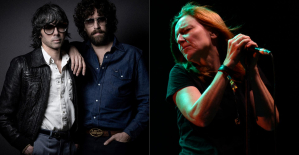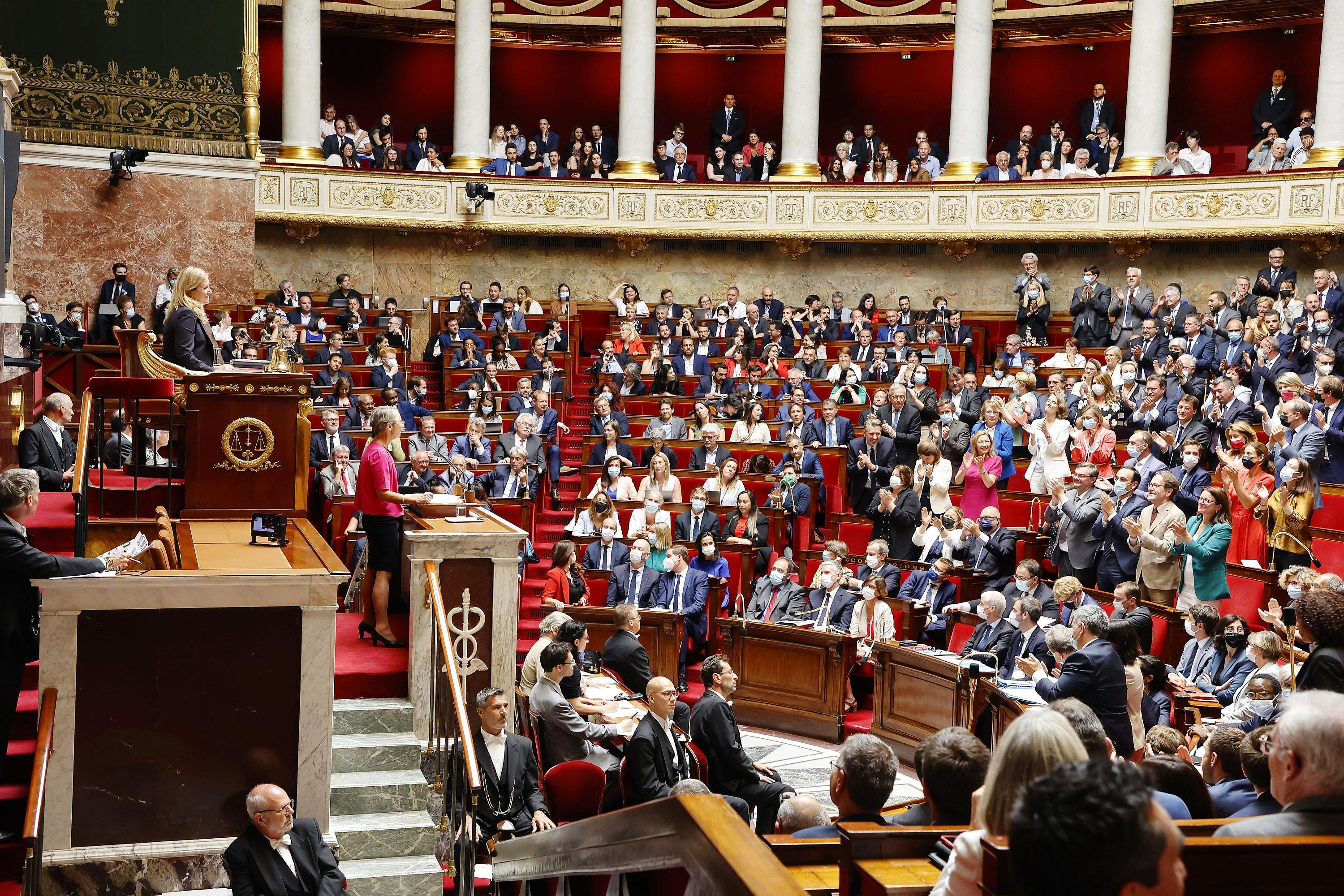A collection of French art, acquired at the birth of the new state of Czechoslovakia for its national gallery, is celebrating its 100th anniversary this year. Leading politicians, including the former president of the Czechoslovak Republic Tomas Garrigue Masaryk, participated in the acquisition of works by Paul Cézanne, Paul Gauguin, Vincent Van Gogh and Pablo Picasso.
The collection, which includes 44 paintings, 25 statues, 22 drawings, and around 170 works of graphic art, is “the jewel of our National Gallery,” says curator and historian Anna Pravdova. To mark the anniversary, the National Gallery has prepared conferences, guided tours, an audio guide and a documentary on the purchase.
Ties between Prague and Paris were weakened when France withdrew from a trade treaty with Czechoslovakia in 1923, five years after the country's independence, following the First World War. The same year, the visit to Prague of French war hero Ferdinand Foch was disrupted by radical students protesting against his visit.
Seeking to reestablish good relations with Paris, Prague had decided to invest massively in French art and to satisfy local artists who had been waiting for this acquisition for a long time. Fearing the reaction of public opinion to its grandiose plan, the government tried to ignore the disbursement of five million Czech crowns, a colossal sum, equivalent at the time to the price of 64 luxury cars or nearly twenty combat aircraft.
A committee led by art collector Vincenc Kramar first chose from 400 French works temporarily exhibited in Prague, then went to Paris to complete this choice.
“The famous purchase by the Czechoslovak state is quite exceptional in terms of its quality, all the pieces are extraordinary, real museum pieces,” confirms Brigitte Léal, deputy director of the modern art museum at the Center Pompidou. “Artists had been looking for a long time to buy exceptional works for national collections and they had important contacts within French galleries,” Ms. Pravdova told AFP.
Prague thus acquired The Green Wheat Field with Cypresses by Van Gogh, House and Farm of Jas de Bouffan by Cézanne and Two Women Among the Flowers by Claude Monet. The sum was increased by one million crowns to also obtain The Lovers by Auguste Renoir.
The current value of the collection is estimated at 40 billion crowns (or 1.63 billion euros). Ms. Pravdova recalls that at the time, French artists were models for their Czech counterparts. “They thought it was important to have French art from the 19th century to the present to illustrate its development and serve educational purposes,” Ms. Pravdova said.
In full frenzy, Kramar himself had also spent the money initially intended for the purchase of Czech works, to acquire three paintings: two paintings by Picasso and the famous self-portrait by Henri Rousseau Myself, landscape portrait by 1890. “It got him into trouble, the authorities weren't really happy,” recalls art historian Nikolaj Savicky in the documentary.
“But this is how Czechoslovakia obtained one of the most famous paintings of all time, for a very reasonable price,” he emphasizes. The works acquired in 1923 are now part of the permanent exhibition at the National Gallery in Prague. They are rarely loaned because they are too fragile to travel, confides Ms. Pravdova.

 Who was Dror Or, the Israeli father who died as a hostage in the hands of Hamas?
Who was Dror Or, the Israeli father who died as a hostage in the hands of Hamas? “Pay in cash”: at his trial, Donald Trump faced with an embarrassing recording
“Pay in cash”: at his trial, Donald Trump faced with an embarrassing recording Italy: a grandmother accidentally serves a bottle filled with wine to a baby, he has an alcoholic coma
Italy: a grandmother accidentally serves a bottle filled with wine to a baby, he has an alcoholic coma The mysterious skeletons of Hermann Göring's villa
The mysterious skeletons of Hermann Göring's villa Children born thanks to PMA do not have more cancers than others
Children born thanks to PMA do not have more cancers than others Breast cancer: less than one in two French women follow screening recommendations
Breast cancer: less than one in two French women follow screening recommendations “Dazzling” symptoms, 5,000 deaths per year, non-existent vaccine... What is Lassa fever, a case of which has been identified in Île-de-France?
“Dazzling” symptoms, 5,000 deaths per year, non-existent vaccine... What is Lassa fever, a case of which has been identified in Île-de-France? Sánchez cancels his agenda and considers resigning: "I need to stop and reflect"
Sánchez cancels his agenda and considers resigning: "I need to stop and reflect" Health carpooling, this source of savings which arouses the ire of patients and taxis
Health carpooling, this source of savings which arouses the ire of patients and taxis Tesla Model 3, MG4 and Dacia Spring.... With the end of the ecological bonus, these electric cars produced in China are seeing their sales fall
Tesla Model 3, MG4 and Dacia Spring.... With the end of the ecological bonus, these electric cars produced in China are seeing their sales fall For the 2024 Olympics, Airbnb commits to fighting prostitution in its accommodation
For the 2024 Olympics, Airbnb commits to fighting prostitution in its accommodation “Shrinkflation”: supermarkets obliged to alert their customers from July 1
“Shrinkflation”: supermarkets obliged to alert their customers from July 1 The electro of Justice and the echoes of Portishead
The electro of Justice and the echoes of Portishead 1924 Olympic Games: according to his daughter, the hero of Chariots of Fire was “not a bigot”
1924 Olympic Games: according to his daughter, the hero of Chariots of Fire was “not a bigot” The “German Brothel” in Yvelines: an uncertain future for the ruined residence
The “German Brothel” in Yvelines: an uncertain future for the ruined residence The eye of the INA: when Paul Auster visited Bernard Pivot
The eye of the INA: when Paul Auster visited Bernard Pivot Omoda 7, another Chinese car that could be manufactured in Spain
Omoda 7, another Chinese car that could be manufactured in Spain BYD chooses CA Auto Bank as financial partner in Spain
BYD chooses CA Auto Bank as financial partner in Spain Tesla and Baidu sign key agreement to boost development of autonomous driving
Tesla and Baidu sign key agreement to boost development of autonomous driving Skoda Kodiaq 2024: a 'beast' plug-in hybrid SUV
Skoda Kodiaq 2024: a 'beast' plug-in hybrid SUV The home mortgage firm rises 3.8% in February and the average interest moderates to 3.33%
The home mortgage firm rises 3.8% in February and the average interest moderates to 3.33% This is how housing prices have changed in Spain in the last decade
This is how housing prices have changed in Spain in the last decade The home mortgage firm drops 10% in January and interest soars to 3.46%
The home mortgage firm drops 10% in January and interest soars to 3.46% The jewel of the Rocío de Nagüeles urbanization: a dream villa in Marbella
The jewel of the Rocío de Nagüeles urbanization: a dream villa in Marbella Facing Jordan Bardella, the popularity match turns to Gabriel Attal’s advantage
Facing Jordan Bardella, the popularity match turns to Gabriel Attal’s advantage Europeans: a senior official on the National Rally list
Europeans: a senior official on the National Rally list Blockade of Sciences Po: the right denounces a “drift”, the government charges the rebels
Blockade of Sciences Po: the right denounces a “drift”, the government charges the rebels Even on a mission for NATO, the Charles-de-Gaulle remains under French control, Lecornu responds to Mélenchon
Even on a mission for NATO, the Charles-de-Gaulle remains under French control, Lecornu responds to Mélenchon These French cities that will boycott the World Cup in Qatar
These French cities that will boycott the World Cup in Qatar Monaco - Clermont: Minamino cornerstone, Fofana essential, the Clermont defense overwhelmed... The tops and the flops
Monaco - Clermont: Minamino cornerstone, Fofana essential, the Clermont defense overwhelmed... The tops and the flops Gymnastics: two gold medals for the Italian Manila Esposito during the European Championships
Gymnastics: two gold medals for the Italian Manila Esposito during the European Championships Champions Cup: in pain, Leinster beats Northampton and qualifies for the final
Champions Cup: in pain, Leinster beats Northampton and qualifies for the final Liga: Real Madrid crowned champion of Spain after FC Barcelona's defeat in Girona
Liga: Real Madrid crowned champion of Spain after FC Barcelona's defeat in Girona


















